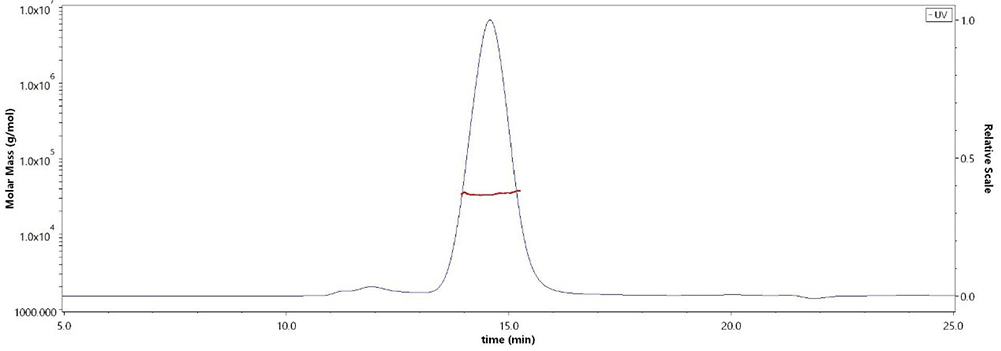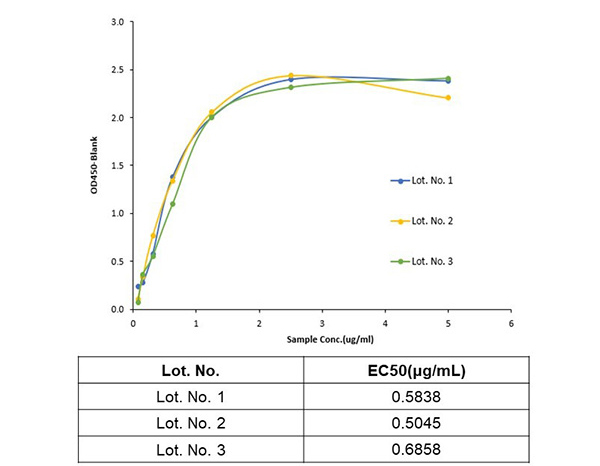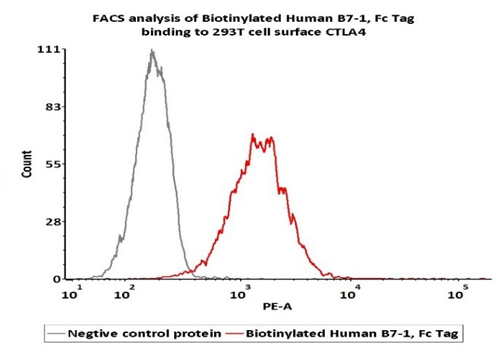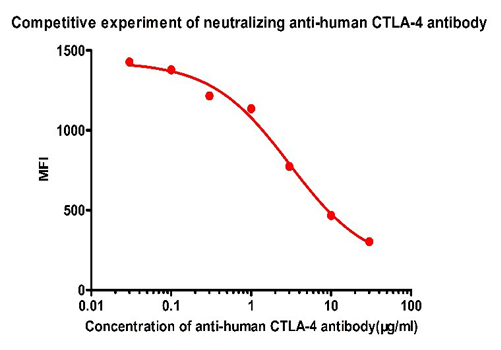 Stimulatory signal
Stimulatory signal  Inhibitory signal
Inhibitory signal
Arrows indicate interaction between receptor and ligand of B7 family members
Click the molecule name to view product details
 Limited Edition Golden Llama is here! Check out how you can get one.
Limited Edition Golden Llama is here! Check out how you can get one.  Limited Edition Golden Llama is here! Check out how you can get one.
Limited Edition Golden Llama is here! Check out how you can get one.
 Offering SPR-BLI Services - Proteins provided for free!
Offering SPR-BLI Services - Proteins provided for free!  Offering SPR-BLI Services - Proteins provided for free!
Offering SPR-BLI Services - Proteins provided for free!
 Thank you for choosing ACROBiosystems. Would you rate our product and service?
Thank you for choosing ACROBiosystems. Would you rate our product and service?  Thank you for choosing ACROBiosystems. Would you rate our product and service?
Thank you for choosing ACROBiosystems. Would you rate our product and service?
 Here come GMP Grade Cytokines!Free Sample is available!
Here come GMP Grade Cytokines!Free Sample is available!  Here come GMP Grade Cytokines!Free Sample is available!
Here come GMP Grade Cytokines!Free Sample is available!
> B7-CD28 family: significant co-stimulatory pathway in immune regulation
Based on the recognition of antigens in the adaptive immune response, T cell activity is largely achieved during activation, where two signals are required. First, T cell receptors must specifically engage peptides presented by major histocompatibility complexes (MHCs) on antigen presenting cells (APCs); secondly, co-stimulatory/ co-inhibitory receptors on T cells must bind B7 ligand family expressed on APCs to regulate situation of T cell.
This provides a key checkpoint in the regulation of T cell immunity. T cell activation is regulated by the innate immune system through positive and negative costimulatory molecules. Members of the B7 family have been shown to be important for regulating T cell responses. So B7 ligand family plays a significance role in human cancers and autoimmune diseases. The B7 ligand family comprises 11 members, which are B7-1, B7-2, B7-H1, B7-DC, B7-H2, B7-H3, B7-H4, B7-H5, BTNL2, B7-H6 and B7-H7.
ACROBiosystems has developed exclusive B7 family proteins with high purity and high bioactivity, which are suitable for immune, antibody screening, SPR, cell activity detection and other experiments, and can accelerate the development of antibody drugs.
 Stimulatory signal
Stimulatory signal  Inhibitory signal
Inhibitory signal
Arrows indicate interaction between receptor and ligand of B7 family members
Click the molecule name to view product details
| B7 family ligand | Ligand alias | Expression | Putative receptors | Role in T/NK cell responses | |
|---|---|---|---|---|---|
| Immune cells | Tumor | ||||
B7-H1 |
PD-L1,CD274,PDCD1LG1 | + | + | PD-1 ,CD80 ,CD80 |
Inhibition |
| B7-DC | PD-L2,CD273,PDCD1LG2 | + | + | PD-1,RGMB | Inhibition |
B7-1  |
CD80,BB1,LAB-7,CD28LG1 | + | CD28,CTLA-4, PD-L1 |
Activation/Inhibition | |
B7-2  |
CD86,B70,LAB72,CD28LG2 | + | CD28 ,CTLA-4 ,CTLA-4 |
Activation/Inhibition | |
B7-H3  |
CD276,B7RP-2 | + | + | Unidentified | Activation/Inhibition |
| B7-H5 | VISTA,GI24,VSIR,SISP1,PD1H,DD1α | + | - | VSIG3 | Inhibition |
| B7-H2 | ICOS-L,ICOSLG,GL50,B7RP1,LICOS | + | ICOS,CD28 ,CTLA-4 ,CTLA-4 |
Activation | |
| B7-H4 | B7x,B7S1,B7h.5,VTCN1 | + | + | Unidentified | Inhibition |
| B7-H6 | NCR3LG1,NR3L1 | - | + | NKp30 | Activation |
| B7-H7 | HHLA2,B7y | + | + | CD28H | Activation/Inhibition |
| Molecule | Cat. No. | Host | Product Description | Structure |
|---|
| Molecule | Cat. No. | Host | Product Description | Structure |
|---|
| Molecule | Cat. No. | Host | Product Description | Structure |
|---|

The purity of Human B7-H3, His Tag (Cat. No. B73-H52E2) is more than 90% and the molecular weight of this protein is around 30-40 kDa verified by SEC-MALS.


Anti-Human PD-L1 Mab (Human IgG1) captured on CM5 chip via anti-human IgG Fc antibodies surface, can bind Human PD-L1, His Tag (Cat. No. PD1-H5229) with an affinity constant of 0.286 nM as determined in a SPR assay (Biacore T200)(Routinely tested).

Flow Cytometry assay shows that Biotinylated Human B7-1, Fc,Avitag (Cat. No. B71-H82F2) can bind to 293 cell overexpressing human CTLA-4. The concentration of Human B7-1 is 0.3 μg/mL (Routinely tested).

FACS analysis shows that the binding of Biotinylated Human B7-1, Fc,Avitag (Cat. No. B71-H82F2) to 293 overexpressing CTLA-4 was inhibited by increasing concentration of neutralizing Anti-Human CTLA-4 antibody. The concentration of B7-1 used is 0.3 μg/mL. The IC50 is 3.025 μg/mL (Routinely tested).

Human B7-H3 (4Ig), His Tag (Cat. No. B7B-H52E7) inhibits Anti-CD3-induced proliferation of PBMC. The EC50 for this effect is 7.95 μg/mL (Routinely tested).

Immobilized cell surface PD-1 (5x104 of cells per well) can bind Human PD-L1, Fc Tag (Cat. No. PD1-H5258) with an EC50 of 0.029 μg/mL (Routinely tested).
This web search service is supported by Google Inc.